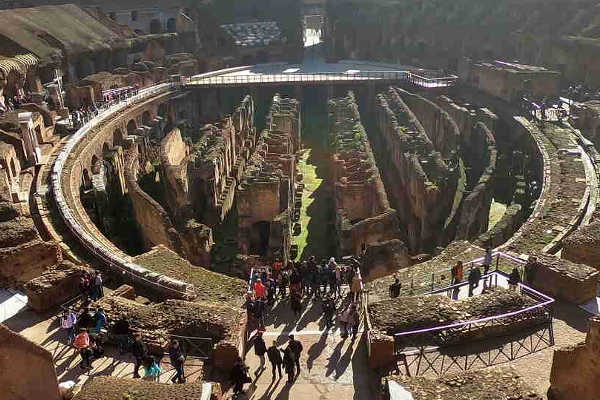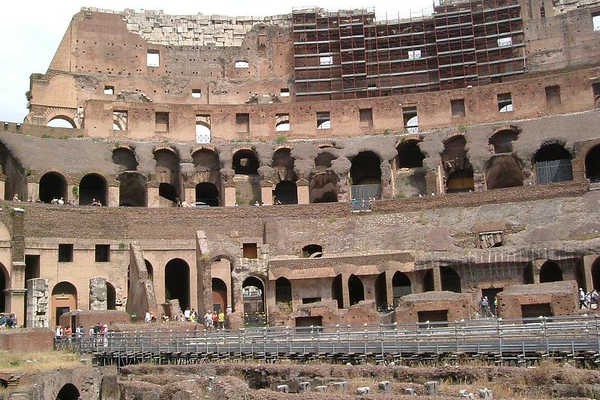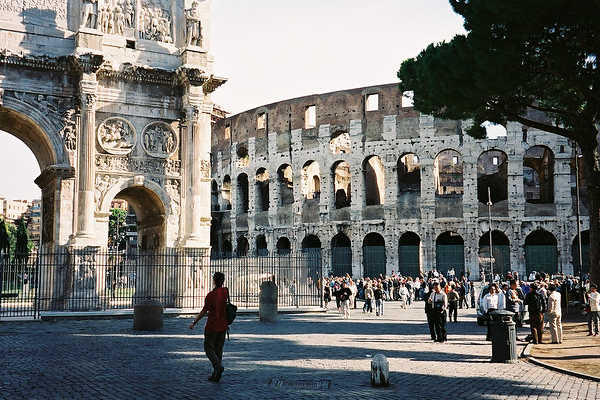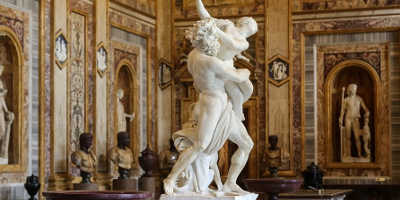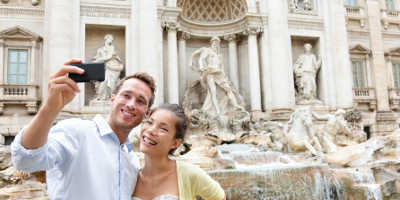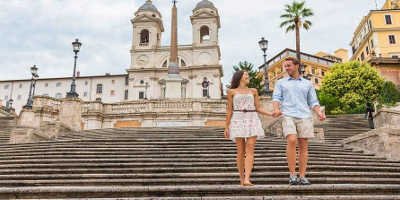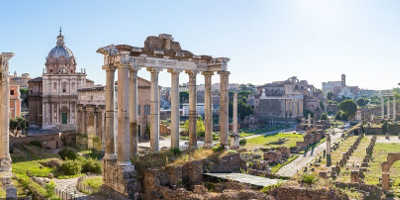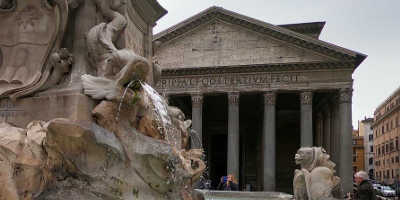Colosseum, Rome
Piazza del Colosseo, 1 Roma, RM 00184
There are few monuments in Italy, or even the world, more famous than the Colosseum.
Its ivory-white and ochre walls lie under the dust and smog from the thriving city of Rome around it. This magnificent structure is a testament to Rome’s once-mighty empire, showcasing the exceptional integrity of the building to this day.
Located at the very heart of Rome’s bustling streets, the Colosseum has become one of the world’s most visited attractions, and for good reason. Not only is this an incredible building to be in the presence of for sheer size alone, but this oval-shaped structure is also nearing its 2000th birthday, making it one of the world’s oldest amphitheatres.
History of the Colosseum
Built in the year 72 AD under the rule of Titus Flavius Vespasianus and completed 8 years later under Titus Flavius Caesar Vespasianus Augustus, this building is the symbol of a dynasty that has stood the test of time. This was not, in fact, the end of construction on the great amphitheatre. Further modifications were made by Titus Flavius Caesar Domitianus Augustus from the year 81 to 96 AD, collectively having been built over 23 years. These 3 emperors were known as the Flavian Dynasty, which lead to the local name of Anfiteatro Flavio or Flavian Amphitheater. It is more commonly known as the Colosseum, which was a name taken from a nearby statue named the Colossus of Nero. Though the statue is no longer standing, having been torn down in the 9th century for its bronze, the base can still be found near the Colosseum, marking the spot where the Colossus of Nero once stood.
Unlike most ampitheatres, the Colosseum was built as a free-standing structure whereas others were built into rocks for additional support. The building is made of concrete and sand and is comprised of three stories of arches with 80 arches circling each level. This meant that there were 80 entrances and exits, 76 of which could be used by ordinary citizens. Around 70,000 spectators could fit into the Colosseum, each sat according to their rank in society. Just like with modern stadiums, there appear to be boxes which would have been reserved for the wealthy. Senators would have sat in the lower levels whereas the commoners, women, and children would have sat in the upper levels. On sunny days, an awning would have stretched over the crowds to protect them from the hot sun.
Many of the events held at the Colosseum were free to attend and occasionally served free food. These events were used by Emperors to gain popularity amongst the public, and it seemed to work! Vespasian ruled as Emperor for 10 years following Nero’s death and a year which saw 4 different emperors attempt to take control.
What was the Colosseum used for?
The Colosseum was built as a gift for the Roman people and was opened by Titus in 80 AD. It was built as a site for entertainment and was christened with 100 days of games. The opening events included multiple gladiatorial battles, epic chariot races, and wild animal fights.
Probably the most famous events showcased within the colosseum were the gladiatorial fights. Death was a form of entertainment to crowds at the time and audiences craved a lengthy battle between gladiators. Each combatant knew that when he stepped into the amphitheatre he may not walk out. After a long fight between the opponents, when one had become trapped or maimed, the other would look to the crowd to decide the final fate of the loser. If the gladiator had fought well, then the crowd may spare his life. But, if dissatisfied, they would sentence him to death.
Whilst gladiators were mainly men, there were some women. One characteristic most fighters had in common was that they were slaves, criminals or prisoners, each kept for the entertainment of the masses. On a few rare occasions, citizens would volunteer themselves for gladiatorial duties.
Amazingly, the colosseum could also play host to mock naval battles called ‘naumachia’. The arena was watertight and could be flooded on cue ready for small boats to float out onto the stage. Then would commence a recreation of famous encounters, with gladiators dressing as opposing sides and fighting until only one side survived. However, the water had a damaging effect on the amphitheatre and these events were stopped. Due to their immense popularity, the naval battles were moved to a nearby lake and continued to thrill audiences.
The Colosseum Today
While it has remained in-tact for the most part, sections of the Colosseum have fallen to ruin. Both earthquakes and stone robbers are responsible for this. Fortunately, a large portion of it still stands, a great symbol of Imperial Rome’s strength. The oval amphitheatre measures 190 by 155 meters and stands as tall as a 12-story building. It was the largest of the ampitheatres built during the Roman era and though it is not the best-preserved example in Italy, it is certainly the most impressive in terms of size.
There is still much to explore at the ancient site including the hypogeum which lies underneath the Colosseum. Here you will find a series of underground tunnels used to house exotic animals such as lions before they were released into the arena. Standing inside this iconic landmark and looking up at the enclosing walls, you can just imagine the structure in its prime, holding thousands of visitors in its stands.
Exploring the grounds of the Colosseum, both inside and out, is an experience like no other. History and culture seep from every crack. Every step takes you deeper into the past, the exciting atmosphere of the building enveloping each visitor. A trip to Italy’s Rome would simply not be complete without exploring the wonder that is the Colosseum.

